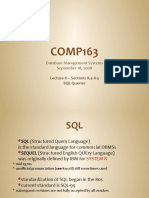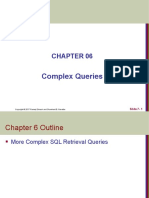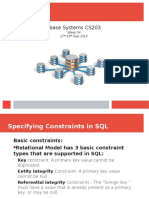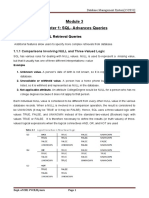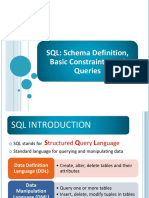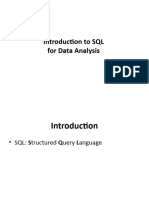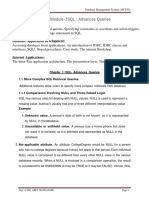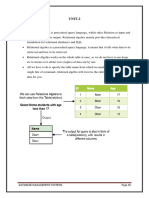0% found this document useful (0 votes)
8 views43 pagesCSC426 SQLSelect
The document provides an overview of basic SQL retrieval queries, focusing on the SELECT statement structure, including the use of WHERE clauses, logical operators, and handling of ambiguous attribute names. It discusses advanced features like nested queries, joins, and aggregate functions, emphasizing the importance of tuple variables and the handling of NULL values. Additionally, it covers the behavior of SQL in terms of duplicate tuples and the use of DISTINCT for unique results.
Uploaded by
salmanokhawandCopyright
© © All Rights Reserved
We take content rights seriously. If you suspect this is your content, claim it here.
Available Formats
Download as PPT, PDF, TXT or read online on Scribd
0% found this document useful (0 votes)
8 views43 pagesCSC426 SQLSelect
The document provides an overview of basic SQL retrieval queries, focusing on the SELECT statement structure, including the use of WHERE clauses, logical operators, and handling of ambiguous attribute names. It discusses advanced features like nested queries, joins, and aggregate functions, emphasizing the importance of tuple variables and the handling of NULL values. Additionally, it covers the behavior of SQL in terms of duplicate tuples and the use of DISTINCT for unique results.
Uploaded by
salmanokhawandCopyright
© © All Rights Reserved
We take content rights seriously. If you suspect this is your content, claim it here.
Available Formats
Download as PPT, PDF, TXT or read online on Scribd
/ 43






